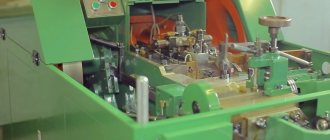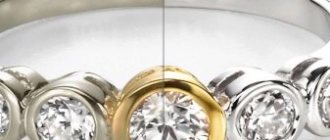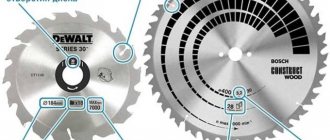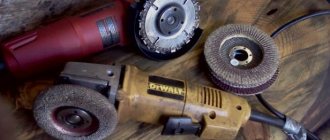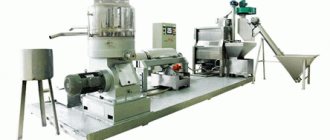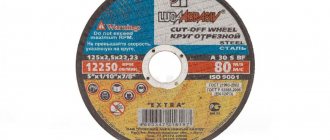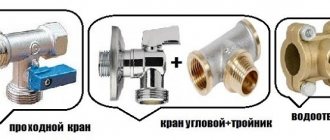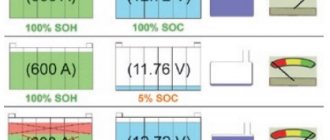Many car enthusiasts in Russia are well familiar with such a service as straightening alloy wheels. Everyone knows the condition of our roads, so even an experienced driver can “catch” a hole or bump while driving. Because of this, even a cast disc can lose its original shape.
For example, after severe damage, the metal part of the wheel is deformed from a circle to a figure eight. In this case, any adequate driver sends the product for restoration to a service center or buys a new kit.
In this article we will talk about the most popular types of rims, consider their advantages and disadvantages. We will also briefly describe how damage is repaired at a service station.
Varieties
Manufacturers produce several main versions of disk products, which are usually divided according to material and manufacturing method:
- Stamped steel is the simplest option. Such wheels are made of steel using stamping technology. Advantage in price and maintainability. For example, when hitting a hole, the steel rim does not split, but bends. Such dents can be easily rolled on a special machine. The main disadvantages of stampings are their heavy weight and unpresentable appearance. Increased weight leads to increased fuel consumption, reduces vehicle controllability, and excessively loads the chassis components. In addition, the car owner has to regularly paint the stamping with an anti-corrosion compound and use plastic caps.
- Cast - the most popular option on the market. Aluminum or magnesium alloys are used to make light-alloy rims. Molten metal is poured under pressure into a special mold. Once the product has cooled, it is removed for machining on machines. To increase strength, manufacturers roll the billet while it is still hot. This technology is called “flow forming”. The advantages of a light alloy rim are low weight and high strength. This allows you to reduce fuel consumption and reduce the load on the suspension. In addition, casting technology allows us to produce products of different designs for any car. However, such wheels are very difficult to repair. Often, after damage, microcracks appear on the rim, which lead to subsequent splitting even with minor impacts.
- Forged - the most durable and lightest option. The rim is made from aluminum alloys. The manufacturing technology is essentially stamping a solid workpiece followed by machining. Advantages: strength, low weight. As a rule, when struck, the rim does not split, but bends. You can straighten almost any damage, just like stamping. Disadvantages: high cost, limited design.
Next, we will consider whether it is possible to straighten a cast wheel and how damage is corrected in a car repair shop.
How to align alloy wheels
An alloy rim is much stronger than stamping, so restoring the original wheel geometry is a rather labor-intensive procedure. If the damage is small, then rolling the wheel rims can be done “cold”. In case of significant deformation - for example, the rim is bent in a figure eight, the damaged areas are leveled only after pre-heating.
If cracks appear after a strong impact, argon-arc welding is used to restore the integrity of the rim. With its help, the tear points are welded. Microcracks can also be corrected using welding.
Rolling casting
When the damage is not very noticeable to the naked eye, you can give the cast disc for rolling so that it is given the same exact geometry. This is done using the same equipment as for processing steel wheels. Stretching and rolling takes place using a special hydraulic press equipped with a roller profile. The geometry is controlled either by surface markings or a laser gauge.
If the rim is not bent too much, and the damage is only noticeable by the readings on the balancing, then the surface of the wheel will be restored precisely through cold rolling. If the dent is large enough, the rolling time will be an hour and a half or more. Sometimes craftsmen do not want to tinker with one wheel for a long time, so they use heating of the disk by welding or a blowtorch to speed up the process. This cannot be done, since in this case the wheel will become unusable.
The peculiarity of a cast light alloy wheel is that it has a solid crystalline metal structure. If heating to a high temperature is carried out in one place, then hopeless destruction of the entire structure occurs, which leads to the appearance of stress in the place of heating. Taking into account the speed at which a heavy disk rotates on the axle while the car is moving, we can say that with the slightest impact the stress point can be damaged so much that a split appears in the wheel. This is very dangerous, since at this moment the speed of your car may be quite high.
Popular tire models
- Yandex.Market rating: Yandex.Market: 4.5
Goodyear Eagle Sport TiresSeasonality: summer Spikes: no Diameter: 14 / 15 / 16
- Yandex.Market rating: Yandex.Market: 4.5
Goodyear EfficientGrip Performance Tires
Seasonality: summer Spikes: no Diameter: 15 / 16 / 17 / 18 / 19 / 20
- Yandex.Market rating: Yandex.Market: 4.5
Goodyear Eagle Sport TZ tires
Seasonality: summer Spikes: no Diameter: 16 / 17 / 18
- Yandex.Market rating: Yandex.Market: 5
Goodyear EfficientGrip Performance 2 Tires
Seasonality: summer Spikes: no Diameter: 15 / 16 / 17 / 18 / 19 / 20
- Yandex.Market rating: Yandex.Market: 4
Goodyear EfficientGrip 2 SUV Tires
Seasonality: summer Spikes: no Diameter: 16 / 17 / 18 / 19 / 20
- Yandex.Market rating: Yandex.Market: 4.5
Goodyear Wrangler All-Terrain Adventure tires with Kevlar
Seasonality: summer Spikes: no Diameter: 15 / 16 / 17 / 18 / 19 / 20
- Yandex.Market rating: Yandex.Market: 4.5
Goodyear Eagle Sport SUV TZ tires
Seasonality: summer Spikes: no Diameter: 17 / 18
- Yandex.Market rating: Yandex.Market: 4
Goodyear Wrangler HP All Weather Tires
Seasonality: summer Spikes: no Diameter: 15 / 16 / 17 / 18 / 19
- Yandex.Market rating: Yandex.Market: 4.5
Goodyear EfficientGrip SUV Tires
Seasonality: summer Spikes: no Diameter: 16 / 17 / 18 / 19 / 20 / 21 / 22
- Yandex.Market rating: Yandex.Market: 4.5
Tires Goodyear Eagle F1 Asymmetric 5
Seasonality: summer Spikes: no Diameter: 17 / 18 / 19 / 20 / 21 / 22
- Yandex.Market rating: Yandex.Market: 4
Goodyear Vector 4Seasons Gen-3 tires
Seasonality: all-season Spikes: no Diameter: 15 / 16 / 17 / 18 / 19
- Yandex.Market rating: Yandex.Market: 5
Goodyear Eagle F1 SuperSport Tires
Seasonality: summer Spikes: no Diameter: 18 / 19 / 20 / 21
- Yandex.Market rating: Yandex.Market: 4.5
Goodyear Eagle F1 Asymmetric 3 SUV tires
Seasonality: summer Spikes: no Diameter: 17 / 18 / 19 / 20 / 21 / 22
- Yandex.Market rating: Yandex.Market: 4.5
Goodyear Eagle F1 SuperSport R tires
Seasonality: summer Spikes: no Diameter: 19 / 20 / 21
- Goodyear Eagle F1 SuperSport RS Tires
Seasonality: summer Spikes: no Diameter: 21
How to correct wheel deformations in a car repair shop:
- Diagnosis of damage. Specialists remove the tire from the damaged rim to determine the cause of the deformation. For example, a figure eight can be seen immediately, while cracks and micro-fractures become visible only after a thorough inspection.
- Nature of damage. Experts determine the type of deformation and what method is best to repair the rim. For example, for minor damage, this is straightening on cold metal. Serious deformations should be straightened only after heating, and cracks should be welded.
- Rim washing. The metal part of the wheel is straightened only after washing. Otherwise, it will be difficult to find possible microcracks and carry out quality repairs.
Straightening alloy wheels is quite difficult without special equipment. Therefore, the auto repair shop must have rolling machines and professional tools available to straighten dents and weld cracks. Accordingly, a quality service cannot be cheap.
Painting of rims
Many modern tire centers offer powder painting services for alloy wheels. Does it make sense to invest money in the appearance of disks?
Restoring the paint and varnish coating of a wheel is, in principle, possible, but this must be done by professionals, and we are talking specifically about specialists in the field of painting disks, and not painting the car body, since the requirements for the quality of painting for wheel disks are much higher. After all, the paint and varnish coating of the wheels is much more exposed to dirt, water, and reagents that are sprinkled (watered) on the streets in winter than any part of the car body, right? Therefore, the disc must be properly prepared for painting by completely removing the old paint coating. In addition, after painting, the disc must be checked for the presence of static imbalance caused by an uneven layer of paint and varnish on different parts of the disc surface. And for this, at a minimum, you need special equipment. General recommendation: if you decide to paint alloy wheels, you need to find specialists in this field who have the necessary conditions and equipment, as well as good reviews and recommendations. After this, it is highly recommended to conclude a written contract, which will indicate the warranty obligations for the work performed. Without all this, you run a high risk of either getting rims that are unsuitable for further use, or the rims will lose their appearance.
Advantages and disadvantages of straightening alloy wheels
Before repairing a damaged rim in a car repair shop, you need to understand the pros and cons of this process. For example, you may decide that fixing the eight will cost more than buying a new set.
Arguments why it is beneficial to straighten an alloy rim:
- For minor deformations, it is cheaper to fix the dents than to purchase a new set. Also, if the car has expensive wheels, then it is more profitable to repair them;
- Auto repair shop specialists will perform diagnostics. As a result, you will know exactly what is wrong with the rim. Often, car enthusiasts think that it is impossible to solve the problem and need to buy a new kit. But after inspection, it turns out that there is a simple solution. For example, a rim can be rolled, and it will last for a long time;
A few words about why straightening a cast rim is not beneficial. No one will give you a 100% guarantee that there will be no problems with the repaired wheel while driving. Straightening and welding cracks allows you to “patch up” the rim, but only for a short time. It is quite possible that you will have to align the wheels regularly, and this is already expensive.
In addition, heating the product during repair worsens its factory characteristics. The alloy loses strength, which means that any bump or hole on the road can potentially lead to a split in the rim.
Methods for rolling stamped discs
There are two technologies for rolling stamped discs. The first technique assumes that the disk will be rolled over the entire surface, including surfaces that have not been subject to deformation. On the one hand, when using this technology, the wheel disk turns out to be quite balanced, but there are also certain negative consequences of full rolling. Any metal under the influence of strong additional loads begins to change its structure. Moreover, the change in structure primarily concerns the surface layer.
Rolling a stamped disc
To put it simply, the outer layer of metal in the disk begins to thicken. However, this does not compact the inner layer of metal. With this process, internal stresses arise between the compacted outer layer and the inner, relatively soft layer. And any stress in the metal can lead to cracks. In addition, the outer layer of metal becomes more brittle after full rolling. And the thickness of the metal over the entire surface of the stamped disk becomes smaller. The second technology involves eliminating deformation only in the damaged area of the disk. The roller of the rolling machine does not touch the entire (not deformed) surface of the disk, but only works on the damaged area. This softer rolling of stamped disks practically does not change the internal structure of the metal, with the exception of the deformed area. And with this technology, the process of restoring a stamped disk occurs somewhat faster. However, it is worth noting that the balance of a disc that has been rolled using soft technology is somewhat more difficult to achieve. But with the right approach and the professionalism of the service workers, the geometry of the stamped disk after the soft rolling technology turns out to be close to ideal. In addition, the spot (soft) technology for disk restoration costs the car owner slightly less than disk restoration using the first technology.
